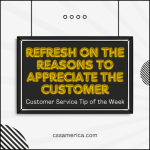With the proliferation of relatively inexpensive online customer satisfaction survey solutions (at least for web-based surveys), there has thankfully been more of a tendency for organizations to ask customers about their experiences. This first-hand feedback can be very helpful for businesses in understanding customer perceptions and preferences.
But organizations can’t be so focused on just getting feedback from customers (those external to the organization) that they ignore many of the internal measures of operations that drive the customer’s (dis)satisfaction.
In the article City, county teaming up to speed land-use permits, Fort Wayne and Allen County governments were recognized for working well together on a new online land-use permitting system. According to the article, “The system will allow developers to track their projects online. It will also help city and county employees track their performance and understand where in the process applications are getting stalled. The system will chart a permit’s progress from department to department. If it is held up too long in one department, the system will red-flag it, and a computer-generated letter will be sent to the applicant.”
The system was developed – in part – to improve customer service. And a large part of that improvement will be driven by the organization looking at internal performance reports that are impacting speed of service processes for external customers.
When you review your customer satisfaction/service performance metrics, think beyond those surveys that customers complete. To truly improve customer service, you have to have effective measures of internal operational performance that impacts service delivery to customers.
Look internally to ensure you’re satisfying externally.
Interested in improving your organization’s customer service? See our other blog posts at: http://serviceadvice.cssamerica.com/category/government/
Learn about our CSS Government services at: http://cssamerica.com/cssgovt.htm





















